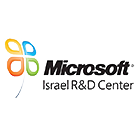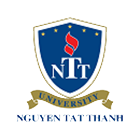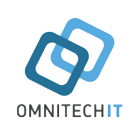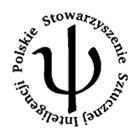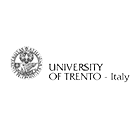Workshops
Software-defined and Virtualized Wireless infrastructure, University of Montenegro
5G Enablers for Cognitive Radio
Fourth International Workshop on Cloud Technologies and Energy Efficiency in Mobile Communication Networks (CLEEN 2016)
Modern Spectrum Management - Global Trends and Experiments
Software-defined and Virtualized Wireless infrastructure
Scope
The rapid growth of wireless terminals and the introduction of a huge number of new applications have led to numerous problems and serious challenges for wireless infrastructure. Despite an increasing demand for more bandwidth, there are open issues with heterogeneous wireless networks interoperability, spectrum scarcity, smooth evolving and fast deployment of network, QoS and QoE support. The present mobile and wireless network infrastructures can’t prevail these challenges.
Software Defined Networking (SDN) is one of the hottest technologies in next generation networking. SDN separates control and data planes, which enables new programmatic interfaces in order to make network administration more flexible. Many important things in realization of SDN concepts in wireless infrastructures are open, such as architecture, as well as design and implementation of programmable/virtualized concepts.
Also, cloud computing and network virtualization are considered as a promising technologies for resolving many issues of future wireless networks. Meanwhile, a great effort has been made in design, customize, and utilize the virtualization and cloud computing technologies in wireless networks but many problems are still open.
Software-defined and Virtualized Wireless infrastructure is a workshop that intends to resolve some challenges and find solutions, as well as propose new applications and services related on software-defined and virtualized mobile and wireless infrastructure. The goal of the workshop is to look for original and research contributions from technology experts, designers, researchers, and architects from academia and industry. Bringing together practitioners and researchers it will be excellent opportunity for sharing their knowledge, experiences and best practices.
The workshop will be a 1.5 hour session.
About the organizers
Milica Pejanovic-Djurisic is a full professor in telecommunications at the University of Montenegro, Faculty of Electrical Engineering, Podgorica, Montenegro. She is also a director of the Research Center for Info-Communication Technologies at the University of Montenegro. Mrs. Pejanovic-Djurisic has got PhD degree in Telecommunications at the University of Belgrade. She has been teaching at the University of Montenegro telecommunications courses on graduate and postgraduate levels, as well as courses in mobile communications and computer communications and networks, being the author of four books and many strategic studies. She has published more than 200 scientific papers in peer-reviewed international and domestic journals and conference proceedings. Her main research interests are: wireless communications, 5G wireless networks, cooperative and energy efficient transmission techniques, ICT trends and applications, optimization of telecommunication development policy. Prof.Pejanovic-Djurisic has considerable industry and operating experiences working as industry consultant (Ericsson, Siemens) and Telecom Montenegro Chairman of the Board. She has been in charge of wireless networks design and implementation in Montenegro and in the region of SEEurope. Prof.Pejanovic-Djurisic has been leading and coordinating many internationally and EU funded ICT projects with domestic and international partners. She is an evaluation expert for EU FP7, and now HORIZON 2020, projects in the field of ICT and a member of IEEE and IEICE. Prof. Pejanovic-Djurisic has also a considerable experience in the field of telecommunication regulation. Being an ITU expert, she participates in a number of missions and ITU activities related with regulation issues, development strategies and new technological solutions.
Prof. Igor Radusinovic received the Electrical Engineering degree by the University of Montenegro in 1994. He received the MSc and Ph.D. degree in Telecommunications networks by the University of Belgrade, Serbia, in 1997 and 2003 respectively. Prof. Igor Radusinovic is a Full Professor at the Faculty of Electrical Engineering, University of Montenegro. He is a Project Director of BIO-ICT, which is the first Montenegrin Centre of Excellence in Bioinformatics. His research interests are mainly in performance analysis and design of telecommunications network protocols and systems. His current research topics are: Traffic Engineering and Quality of Service/Quality of Experience in Software Defined Networking /Network Function Virtualization, Softwarized platforms for Internet-of-Things, Software Defined Networking switch/router architectures/designs, experimental Software Defined Networking testbeds and deployments, packet switch architectures, Quality of Service congestion control mechanisms in heterogeneous networks and cloud based softwarization and virtualization solutions. In these areas he has published more than 120 referred publications in peer-review international journals (IEEE, IEICE, AUEU, Springer,..) and international proceedings (IEEE, ACM,…). He participated as project leader and project member in a number of international (FP7, COST action) and national research teams and projects, as well as bilateral international research projects. Prof. Radusinovic has considerable industry and operating experiences working on many strategic studies, regulatory issues, development strategies and technical solutions in area of ICT. He is a member of several professional and science bodies.
Program of the workshop session
1. Introductory remarks
Prof.dr Milica Pejanović-Djurišić, Coordinator of the Fore-Mont Project, Research Centre for ICT, Faculty of Electrical Engineering, University of Montenegro
2. 5G: Giving a real boost to new Iaas services via SDN based virtualization techniques
Prof dr Igor Radusinović, MSc Slavica Tomović, Research Centre for ICT, Faculty of Electrical Engineering, University of Montenegro
3. Spectrum Sensing and Dynamic Spectrum Access Applications based on USRP Platforms
Prof.dr Octavian Fratu, Alexandru Martian and Simona Halunga, University POLITEHNICA of Bucharest Faculty of Electronics, Telecommunications and Information Tehnology, Telecommunication Department.
4. Energy Efficient Target Coverage in Partially Deployed Software Defined Wireless Sensor Networks
MSc Slavica Tomović, Prof dr Igor Radusinović, Research Centre for ICT, Faculty of Electrical Engineering, University of Montenegro
5. Self Organized Wireless Sensor Networks with HTTP/COAP functionality
Dr. Andrej Mihailović, Dr. Marko Simeunović, Dr. Enis Kočan, Prof dr Milica Pejanović-Djurišić, Research Centre for ICT, Faculty of Electrical Engineering, University of Montenegro
This workshop is sponsored by
5G Enablers for Cognitive Radio
Workshop organized by the Celtic Plus SHARING project
Description of the topic of the Workshop
Cognitive Radio will have to coexist, and even possibly be part of the future 5G systems. Thus, enabling technologies for 5G and cognitive radio will have to be developed. They very often turn out to be the same.
One very important issue in 5G is spectrum use, including low frequency bands and the possibility for users and base stations to communicate in several bands (dual connectivity). The issue is the same for cognitive radio, since it needs equipment to be reconfigured between available bands. Therefore, this workshop presents several approaches for dual bands front-ends, including energy efficiency RF, reconfigurable RF, miniature dual band antennas, and also a software implementation of real time dual connectivity.
Another very important topic, common to both 5G and cognitive radio, is interference mitigation. A presentation addresses this issue, using widely linear processing, implying that non circular modulation be used in future systems.
Also, new waveforms are envisaged, as well for cognitive radio as for 5G. These new waveforms are supposed to have better properties than OFDM, in particular a good frequency localization. A comparison of several such new waveforms will be presented.
The workshop will be a 1.5 hour session.
About the organizers
Sylvie Mayrargue graduated from Ecole Normale Supérieure JF in Mathematics, and from Telecom Paris Engineering School. She then joined CNET (now OrangeLabs), where she was first involved in propagation studies, then in digital communications and signal processing activities, more specifically in antenna array processing. From 1995 on, she has been involved in various EU projects on adaptive antennas and also software defined radio. She joined CEA-LETI in 2003, and became coordinator of the FP5 MATRICE project, then of the Celtic WISQUAS project. She coordinated CEA-LETI activities in Celtic WINNER+, Celtic+ SAN and SHARING, FP7 BeFemto, all projects on 4G cellular systems. Her interests have more recently included the Internet of Things. She coordinated CEA-LETI activities in FP7 OUTSMART and in CELTIC+ TILAS projects in the domain of Smart Cities. She holds 6 patents and 45 publications
Program of the workshop session
C. Jouanlanne, C. Delaveaud, (CEA-LETI), Y. Fernández, A.Sánchez (TTI) "A reconfigurable dual band LTE small cell RF front-end/antenna system to support carrier aggregation"
The issue is to design an RF front-end to support carrier aggregation, composed of - An energy efficiency power amplifier capable to operate at different operating points to optimize its performance depending on carrier aggregation configuration - a miniature antenna, capable of accommodating the very low frequency bands allocated to 4G/ 5G (typically band 20 around 800MHz), together with higher frequency bands (typically band 7 around 2.6GHz). Size reduction is obtained thanks to frequency agility in the lower band.
This paper is a contribution from the SHARING project, and introduces the demonstration showcased on the SHARING booth.
Y.Louet, A. Gouba (Supelec) "Energy saving by joint optimization of crest factor reduction and linearization processing"
This study proposes to smartly merge the peak factor reduction (also known as PAPR reduction) and linearization steps prior to power amplification. Indeed, the smaller the peak factor of transmitted waveforms, the larger the power amplifier efficiency. Results have shown that this approach is able to optimize the transmission performance by jointly tuning linearity and peak factor reduction depending on needs and load, which directly mitigates the power amplifier consumption.
F. Kaltenberger (Eurecom) "Carrier Aggregation implementation on Open Air Interface Platform"
OpenAirInterface (OAI) provides an open-source standard-compliant implementation of LTE Release 10 for UE, eNB, MME, HSS, SGw and PGw on standard Linux-based computing equipment (Intel x86 PC/ARM architectures) that can be used in conjunction with off-the-shelf SDR platforms such as USRP, Blade RF, Sodera, and ExpressMIMO2. The platform can be used for real-time experimentation and is interoperable with commercial equipment.
This presentation will introduce new features of OAI that make it simpler than ever to use for LTE-compliant spectrum-agile experimentation. These include the implementation of the Release 10 carrier aggregation features as well as an API that lets users implement their own scheduling algorithms and plug them directly into OAI. The presentation introduces the demonstration that is showcased on the SHARING booth. In this demonstration the carrier aggregation features of OAI are showcased together with a test UE from SEQUANS Communications. The development was partially financed by the FP7 project SOLDER.
Lime Microsystems will present their field programmable RF (FPRF) transceivers for the next generation of wireless broadband systems, that allows equipment to be reconfigured. This presentation introduces the demonstration that will be showcased on the SHARING booth.
A.Ferréol (Thalès Communications) "Interference mitigation using the concept of widely linear receivers"
Indeed, provided that user or interferer uses a non–circular modulation, a widely linear minimum mean square receiver can reject an interferer using a single antenna. This paper is a contribution from the SHARING project.
R.Gerzaguet, D. Kténas, N. Cassiau and J-B. Doré (CEA-LETI) "Comparative study of 5G waveform candidates for below 6GHz air interface"
A fair comparison of several 5G waveform candidates (UFMC, FBMC, and GFDM) is proposed under a common framework. Spectral efficiency, power spectral density, peak to average power ratio and robustness to asynchronous multi-user uplink transmission will be assessed. The benefits of these new waveforms for the foreseen 5G use cases will be clearly highlighted and it will be also underlined that some concepts still need to be improved to achieve the full range of expected benefits of 5G.
Fourth International Workshop on Cloud Technologies and Energy Efficiency in Mobile Communication Networks (CLEEN 2016)
Scope
The last decades brought an exponential increase in mobile traffic volume. This will continue and a 1000-fold increase by 2020 has been forecasted. Hence, mobile communication networks and users behaviours are permanently evolving. For instance, heterogeneous networks, i.e. macro-cellular networks complemented by dense small-cell deployments, promise to provide the required data rates through an increased spatial utilisation of the spectrum. Due to strong inter-cell interference, heterogeneous networks will require a high degree of coordination as offered by centralised processing. Furthermore, cloud-processing has been established as a way to scale computational resources, to centralize data and processing towards data-centers, and to exploit computational diversity. This trend had a tremendous impact on how users access and manage their data. However, also mobile network operators realized the tremendous potential of cloud processing for their networks, e.g. to centralize core-network functionality on standard IT platforms or to centralize parts of the radio-access network through radio over fiber. Moreover, all future innovative network solutions will be conceived and deployed with a long term perspective of sustainability, both in terms of energy consumption of mobile network (and related interoperability with terminals) and cost efficiency of the different deployment and management options. This workshop explores novel concepts, like how to:
- allow for flexibly centralised radio access networks using cloud-processing based on open IT platforms, in coordination with network virtualization technologies (including Mobile Edge Computing)
- allow for a high quality of experience for mobile access to cloud-processing resources and services, and
- allow a future network evolution focused on energy efficiency and cost-effectiveness
This workshop will cover technologies across PHY, MAC, and network layers, technologies which translate the cloud-paradigm to the radio access and backhaul network, and will analyse the network evolution from the energy efficiency perspective. It will study the requirements, constraints, and implications for mobile communication networks, and also potential relationship with the offered service, both from the academic and the industrial point of view.
About the organizers
The workshop is organized by Dario Sabella (Telecom Italia) and Emilio Calvanese Strinati (CEA LETI)
Program of the workshop session
13:45 Welcome and presentation by the workshop chair (Dario Sabella, TIM)
13:50 Keynote (Maziar Nekovee, Samsung), "5G: Key Technology Components and Roadmap"
14:10 Session #1 (3 presentations from EU funded projects):
- Miquel Payaro (CTTC, Flex5Gware): Achieving flexibility in 5G networks via reconfigurable HW/SW platforms
- Kostantinos Samdanis (NEC, 5G NORMA): Flexible Connectivity and QoE/QoS Management for 5G Networks
- Uwe Herzog (Eurescom, SPEED-5G) "Quality of Service Provision and capacity Expansion through extended-DSA for 5G"
14:50 Coffee Break
15:00 Session #2 (3 technical papers)
- Giovanni Stea (University of Pisa) "Statistically sound experiments with OpenAirInterface Cloud-RAN prototypes"
- Bessem Sayadi (Nokia Bell Labs), "SDN for 5G Mobile Networks: NORMA perspective"
- Benoit Miscopein (CEA) "Dynamic spectrum allocation and energy efficiency in 5G systems"
16:40 Panel discussion (moderator: Dario Sabella, TIM): To what direction are mobile cloud networks heading?
17:00 Wrap-Up & Closing by the Workshop Chair
Modern Spectrum Management - Global Trends and Experiments
Scope
Radio spectrum is the fundamental resource that enables all forms of wireless communications. Today our electronic communications have permeated into all walks of societal activities – scientific, business, governance, security and increasingly in our day-to-day social interactions. The exponential rise of traffic in wireless networks and services around us are just an indicator of the dramatic needs for the bandwidth by next generation communications networks in the coming decades. New industrial visions of an Internet of Things, Smart City, Intelligent Transport Systems and 5G networks are raising unprecedented expectations of the amount of information that will be flow through wireless channels of the future.
An increase in information flow means even more bandwidth for wireless networks. Whereas traditional spectrum management approach has relied on exclusive allocation and use of spectrum, including for mobile communications and wireless broadband, the high-value, high-quality spectrum in sub-3 GHz bands is limited as a natural resource. On primary allocation basis, there are fewer and fewer opportunities to release such frequencies on an exclusive-use basis.
Spectrum management in the 21st C. is beginning to look at a new model of spectrum use - one that is more efficient and more economical. It is based on the concept of spectrum sharing. Sharing over time, across space and in frequencies.
Since spectrum planning for future allocations takes a long lead time of several years, the feasibility of new concepts such as spectrum sharing need to be evaluated not only technically through simulation tools but also though field experiments and live pilots from regulatory and commercial perspectives.
This workshop will examine various perspectives on spectrum sharing - regulatory, technical and business - through the prism of various pilots and experiments on spectrum sharing in Europe and worldwide. The outcome of the workshop will be to identify new research challenges as well as opportunities for spectrum sharing studies through field experiments and pilots.
About the organizers
This workshop is organized by the JRC.
Program
10:45 - 12:15
Session 1: Trials and Experiments in Europe
-
Workshop Objectives
Dr Pravir Chawdhry, European Commission Joint Research Centre
-
UK - Spectrum Sharing in the UK: Current Status and Future Directions
Mr Cesar Gutierrez, OFCOM, UK
-
Finland - Trials on Spectrum sharing and Future Directions
Dr Seppo Yrjola, Nokia Research, Finland
-
Italy - Pilot on License Shared Access and Future Directions
Dr Doriana Guiducci, Fondazione Ugo Bordoni, IT
-
France - Pilot on License Shared Access
Mr Christophe Le Thierry, Red Technologies, FR
12:15 - 13:45
Lunch Break
13:45 - 15:15
Session 2: Trials and Experiments Worldwide
-
United States - Current and Future Directions in Spectrum Sharing
Prof. Martin Weiss; University of Pittsburg, USA
-
China - Spectrum Sharing Perspectives
Prof. Honggang Zhang, Zhejiang University, China
-
Spectrum Sharing Pilots - an Industrial stakeholder perspective
Dr Heikki Kokkinen, Fairspectrum, Finland
-
Global Perspective and Standards
Dr Apurva Mody, BAE Systems / WhiteSpace Alliance, USA
-
Discussion
- Business opportunities
- Lessons learnt
- Future needs for experimentation
- Standardization
- Facilitation and collaboration
- Key Challenges for spectrum management
- Open research questions


























